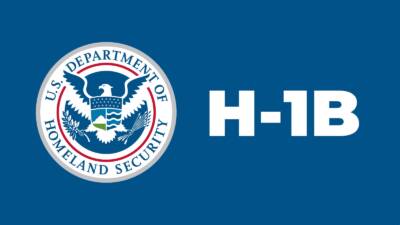Custom Blocks Outline
Recent Posts Grid
-

National Interest Waivers & the Matter of Dhanasar Case
The National Interest Waiver (NIW) stands as a beacon of opportunity for certain immigrants who wish to bypass the traditional labor certification process required for certain employment-based green cards. This waiver is particularly relevant for those who demonstrate that their work in the United States would be of national interest. The interpretation of “national interest” […]
Read More -

Navigating a Layoff: Transitioning to Another Nonimmigrant Status Through the I-539 Application
Experiencing a layoff can be a challenging period, especially for those on employment-based visas in the U.S. However, filing an I-539, Application to Extend/Change Nonimmigrant Status, can provide the breathing space needed to strategize your next move. This application allows nonimmigrants to transition from their former employment-based nonimmigrant category to another nonimmigrant status, like a […]
Read More -

L-1 Visa: Qualifying Relationship & Qualifying Employment Requirements
The L-1 nonimmigrant visa category is for intracompany transferees. It allows certain individuals who have one year of qualifying employment abroad in an executive, managerial, or specialized knowledge position to transfer to a related U.S. business entity with a qualifying relationship. What is a “Qualifying Relationship”? A qualifying relationship exists if the foreign entity is […]
Read More
Accordion
- Accordion Title 1
-
Accordion content goes here.
- Accordion Title 2
-
Accordion content goes here.
- Accordion Title 3
-
Accordion content goes here.
Child Pages Grid
Call to Action
Custom Menu
Custom HTML Code????Hero
Map
Paginated Posts
-

Valid Passport or Travel Document Requirement for FY2025 H-1B Registrations
On February 2, 2024, the Department of Homeland Security (DHS) published a final rule to improve the H-1B registration selection process and program integrity. This final rule aims to streamline the process while enhancing accountability and ensuring the accuracy of beneficiary information. One of the most notable changes is the shift towards a beneficiary-centric approach, […]Read More -

Breakdown of the E-1 Treaty Trader visa application process for a national of Canada
The E-1 visa classification, often referred to as the Treaty Trader visa, is designed for individuals from “treaty countries,” such as Canada, and its primary purpose is to facilitate international trade by allowing business owners and/or their employees to work and live in the U.S. while engaged in substantial and principal trade with the U.S. […]Read More -

Self-Employment in the U.S. Immigration System
Someone who is self-employed is defined as someone who works for oneself as a freelancer (also known as an independent contractor) or the owner of a business rather than for an employer. There are multiple ways you can work for yourself in the United States as a nonimmigrant. To do so, you must first obtain […]Read More -

New Asylum Program Fee
Last month, USCIS announced a final rule, which adjusts certain immigration and naturalization benefit request fees for the first time since 2016. This final rule goes into effect on April 1, 2024. Included in this final rule is a new Asylum Program Fee of $600 that employers will have to pay if they file either […]Read More -

H-1B Visa: Why the cap? A look into congressional history
The H-1B visa program, established by the Immigration Act of 1990, has undergone several modifications since its inception. The cap on H-1B visas—set at 65,000, with an additional 20,000 for those holding a U.S. master’s degree or higher—has been a subject of considerable debate and legislation, reflecting a balance between competing interests of protecting domestic […]Read More
Recent Posts List
Related Posts
Team
-

Rosanna Berardi, Esq.
Managing Partner
Read Profile -

Jennifer Behm, Esq.
Partner
Read Profile -

Gabriella Agostinelli, Esq.
Senior Associate Attorney
Read Profile -

Zach Ahlstrom, Esq.
Senior Associate Attorney
Read Profile -

Rebecca Bentley
Associate Attorney
Read Profile -

Andrea Godfread-Brown
Senior Counsel
Read Profile -

Ruth Garbanzo
Associate Attorney
Read Profile -

Anna O’Neill
PERM Law Clerk
Read Profile -

Gabriella Walsh
Law Clerk
Read Profile -

Lindsey Hornung
Law Clerk
Read Profile -

Samantha Edlich
Senior Paralegal
Read Profile -

Claire Russ
Paralegal
Read Profile -

Julia Erbacher
Paralegal
Read Profile -

Kelly Henault
Paralegal
Read Profile -

Erin Ruiz
Paralegal
Read Profile -

Mari Jo Domzalski
Administrative Legal Assistant
Read Profile -

Sam Tiranno
NAFTA Paralegal
Read Profile -

Toni Calliva
Visa Agent (London)
Read Profile
Testimonials
Testimonials
-
Daniel T.
“I was looking to efficiently secure my US citizenship, after holding a Green Card for over 20 years. Berardi Immigration provided me clear advice and assistance in completing the paperwork. They always followed up to ensure that I was well prepared at every step. My favorite part of working with Berardi Immigration law was the responsiveness – questions are answered quickly, very competently, with clear direction and in a most friendly manner.”
Sidebar Behaviour
Call to Action
Someone Else The ThirdRecent Posts Grid
-

National Interest Waivers & the Matter of Dhanasar Case
The National Interest Waiver (NIW) stands as a beacon of opportunity for certain immigrants who wish to bypass the traditional labor certification process required for certain employment-based green cards. This waiver is particularly relevant for those who demonstrate that their work in the United States would be of national interest. The interpretation of “national interest” […]
Read More -

Navigating a Layoff: Transitioning to Another Nonimmigrant Status Through the I-539 Application
Experiencing a layoff can be a challenging period, especially for those on employment-based visas in the U.S. However, filing an I-539, Application to Extend/Change Nonimmigrant Status, can provide the breathing space needed to strategize your next move. This application allows nonimmigrants to transition from their former employment-based nonimmigrant category to another nonimmigrant status, like a […]
Read More -

L-1 Visa: Qualifying Relationship & Qualifying Employment Requirements
The L-1 nonimmigrant visa category is for intracompany transferees. It allows certain individuals who have one year of qualifying employment abroad in an executive, managerial, or specialized knowledge position to transfer to a related U.S. business entity with a qualifying relationship. What is a “Qualifying Relationship”? A qualifying relationship exists if the foreign entity is […]
Read More
Child Pages Grid
Custom Menu
Map
Paginated Posts
-

Valid Passport or Travel Document Requirement for FY2025 H-1B Registrations
On February 2, 2024, the Department of Homeland Security (DHS) published a final rule to improve the H-1B registration selection process and program integrity. This final rule aims to streamline the process while enhancing accountability and ensuring the accuracy of beneficiary information. One of the most notable changes is the shift towards a beneficiary-centric approach, […]Read More -

Breakdown of the E-1 Treaty Trader visa application process for a national of Canada
The E-1 visa classification, often referred to as the Treaty Trader visa, is designed for individuals from “treaty countries,” such as Canada, and its primary purpose is to facilitate international trade by allowing business owners and/or their employees to work and live in the U.S. while engaged in substantial and principal trade with the U.S. […]Read More -

Self-Employment in the U.S. Immigration System
Someone who is self-employed is defined as someone who works for oneself as a freelancer (also known as an independent contractor) or the owner of a business rather than for an employer. There are multiple ways you can work for yourself in the United States as a nonimmigrant. To do so, you must first obtain […]Read More -

New Asylum Program Fee
Last month, USCIS announced a final rule, which adjusts certain immigration and naturalization benefit request fees for the first time since 2016. This final rule goes into effect on April 1, 2024. Included in this final rule is a new Asylum Program Fee of $600 that employers will have to pay if they file either […]Read More -

H-1B Visa: Why the cap? A look into congressional history
The H-1B visa program, established by the Immigration Act of 1990, has undergone several modifications since its inception. The cap on H-1B visas—set at 65,000, with an additional 20,000 for those holding a U.S. master’s degree or higher—has been a subject of considerable debate and legislation, reflecting a balance between competing interests of protecting domestic […]Read More
Recent Posts List
Related Posts
Team
-

Rosanna Berardi, Esq.
Managing Partner
Read Profile -

Jennifer Behm, Esq.
Partner
Read Profile -

Gabriella Agostinelli, Esq.
Senior Associate Attorney
Read Profile -

Zach Ahlstrom, Esq.
Senior Associate Attorney
Read Profile -

Rebecca Bentley
Associate Attorney
Read Profile -

Andrea Godfread-Brown
Senior Counsel
Read Profile -

Ruth Garbanzo
Associate Attorney
Read Profile -

Anna O’Neill
PERM Law Clerk
Read Profile -

Gabriella Walsh
Law Clerk
Read Profile -

Lindsey Hornung
Law Clerk
Read Profile -

Samantha Edlich
Senior Paralegal
Read Profile -

Claire Russ
Paralegal
Read Profile -

Julia Erbacher
Paralegal
Read Profile -

Kelly Henault
Paralegal
Read Profile -

Erin Ruiz
Paralegal
Read Profile -

Mari Jo Domzalski
Administrative Legal Assistant
Read Profile -

Sam Tiranno
NAFTA Paralegal
Read Profile -

Toni Calliva
Visa Agent (London)
Read Profile




